

Table of contents
- How long does it take to germinate tomatoes?
- How important is the timing of sowing?
- What does the germination time depend on?
- age of seeds
- climate/temperature
- air and soil moisture
- Light conditions/sowing depth
- Can I speed up germination?
No bought tomato tastes as delicious as from your own garden. At least that is the opinion of many hobby gardeners. With little effort, they can achieve a large harvest, often over several months. Not only the right care during the ripening period is important, but also the time of sowing and good conditions during the germination period.
How long does it take to germinate tomatoes?
The germination time of tomatoes depends on various factors. Under optimal conditions, modern varieties germinate after approx. 10 days, but old varieties later at least 28 days. Accordingly, old tomato varieties should be sown earlier if the desired start of harvest is the same.
How important is the timing of sowing?
The time of sowing plays a subordinate role for the germination period itself, because you can influence the conditions (temperature or humidity) with various means. However, if you want to plant your tomatoes outdoors, then this should only be done after the ice saints, when the temperatures no longer drop close to freezing point, even at night. However, if the little plants remain in the warm apartment for too long, they will easily wilt. Planted outdoors, these tomatoes die easily. About six to eight weeks after germination, your tomato seedlings should be planted out. Sowing should be planned accordingly.
Tip:
Do not sow your tomatoes too early, otherwise you risk so-called hot shoots. The little plants grow quickly, but remain weak and powerless.
What does the germination time depend on?

The germination time of your tomatoes depends on various factors, the most important of which are:
- the selected tomato variety
- the age of the seeds
- the climate (especially when sowing outdoors)/the temperature
- the air and soil moisture at the germination site
- the lighting conditions
- the depth of sowing
age of seeds
If possible, only use fresh tomato seeds, their ability to germinate decreases with age. Seeds from the previous year may not germinate as well. Also check the best before date on the seed packet. After expiration, you should only use these seeds if you do not depend on the harvest, for example in addition to fresh seeds.
climate/temperature
Sowing outdoors is only recommended if the night-time temperatures are at least 15 °C. Since it will still be a few months before the harvest, this sowing is hardly recommended here. The situation is different if you own a greenhouse. You can usually sow there from March if the winter is not too long. The optimal germination temperature of modern tomato varieties is between 20 °C and 24 °C, old varieties tolerate up to 30 °C. However, the tomato does not like larger fluctuations. If the temperature during sowing and germination is below the optimum values, germination will take longer. Just one degree less can delay the germination time by several days. It is therefore essential to ensure that the heat remains constant.
air and soil moisture
The tomato seeds need constant moisture from the air and soil to reliably germinate and grow. If the heating air is dry, they will die quite quickly or will not germinate at all. On the other hand, too much moisture or even waterlogging causes the seedlings or seeds to rot or cause mold to form. With a small mini greenhouse on the windowsill or foil pulled over the nursery pot, you can control the temperature as well as the air and soil moisture. Gently spray the seeds and/or sprouts with lukewarm or room temperature water, which is welcome to be stale. Daily airing prevents mold growth. During this time, the window should not be opened so that there is no draft.
Light conditions/sowing depth

Tomatoes belong to the so-called light germs, so the seeds need a minimum amount of light in order to be able to germinate at all. If they are sown too deep, they will germinate later or not at all. But the blazing sun also damages the tender seedlings. Therefore, tomatoes should not be grown in direct sunlight. Window sills facing east or west are recommended for indoor cultivation. It is bright enough there, but shaded at midday. When cultivating in a greenhouse, make sure that there is light shade at midday.
Can I speed up germination?
Despite good planning of the gardening year, it can sometimes happen that the "perfect" time for sowing the tomatoes is missed. If it's just a few days, it's not a drama. You can speed up germination a little with a few simple things. Also make sure you have the best growing conditions. If it is a longer period, then you have to reckon with a later and possibly shorter harvest time. A lukewarm bath may shorten the germination time of your tomatoes a bit. To do this, soak the seeds in lukewarm water, chamomile tea or a garlic broth for at least a few hours, preferably overnight. The garlic also has an antibacterial effect. Ideally, keep the bath consistently lukewarm the entire time. You can achieve this by placing the bath tub on a heater or filling it in a thermos flask. Then sow as usual.
 Home editorial office
Home editorial office
Learn more about tomatoes
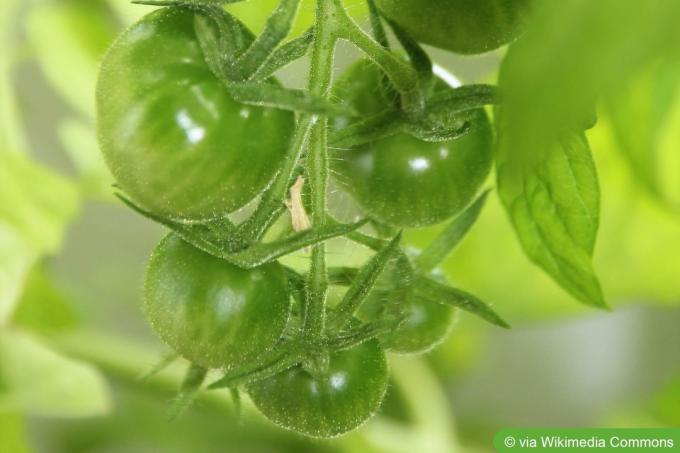
Mexican Honey Tomato: Taste & Cultivation
With the "Mexican honey tomato", hobby gardeners can bring a particularly sweet tomato variety into their garden. Due to its low acidity, it is one of the most popular sweet tomatoes and at the same time very easy to care for.
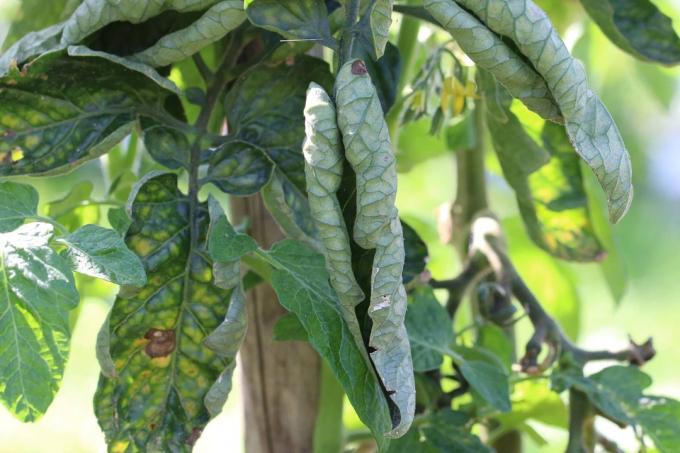
Tomato leaves curl: what to do?
There are many causes of curled leaves on tomato plants. Some are harmless, others can ruin crops. So waiting is not an option. Like a detective, you must search for clues. And then, if feasible, tailor-made countermeasures. Here's what to do when tomato leaves curl.
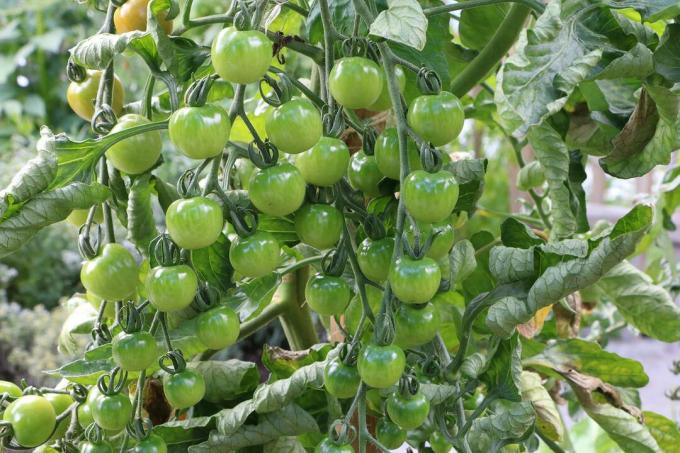
Fertilize tomatoes: how often, when and with what?
Tomatoes need a consistently high amount of nutrients for the development of flowers and fruits. In addition to choosing the right fertilizer, the amount and frequency also play an important role. All essential information for an optimal dosage can be found here.
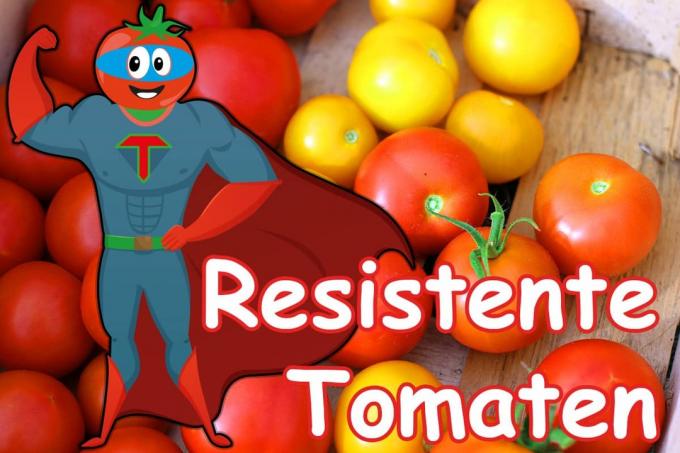
11 resistant tomato varieties defy rain and disease
Tomatoes are considered to be relatively easy to care for, but rain and numerous diseases can bother them. Fortunately, there are numerous tomato varieties that are resistant to many dreaded tomato diseases. We present the most popular specimens in this article.
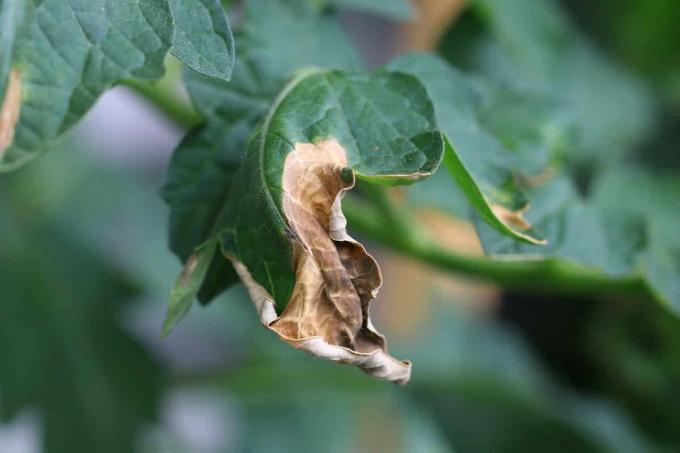
Control late blight and late blight in tomatoes
If pathogens of brown blight and late blight have settled on tomato plants, there is little hope of successful control. Home remedies and mechanical interventions only make sense in the early stages. It is all the more important that you prevent infections in a targeted manner through care measures.

How healthy are tomatoes? Information on calories, nutritional values & Co.
Snack healthy? The tomato makes it possible! Find out here why the red fruit should end up on the plate more often!

